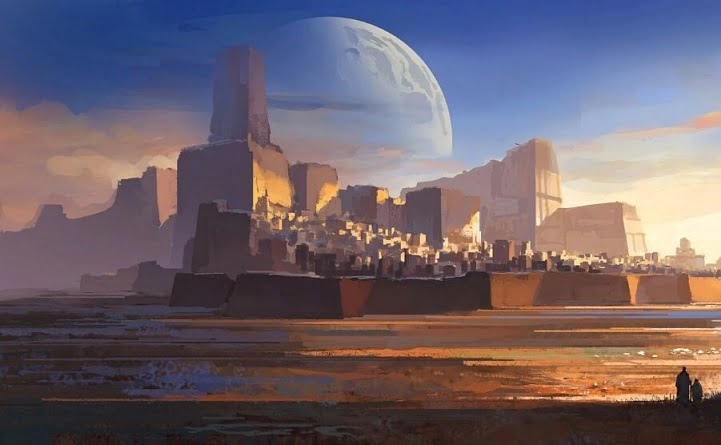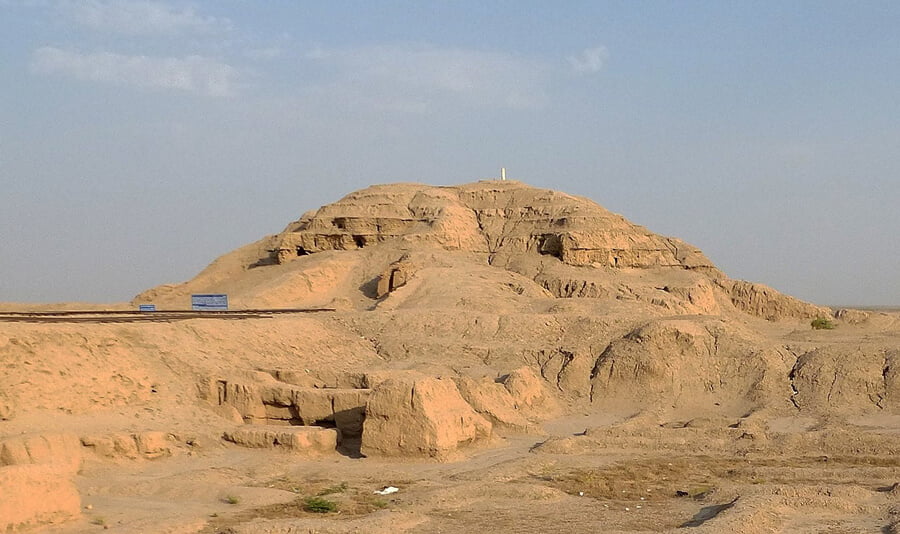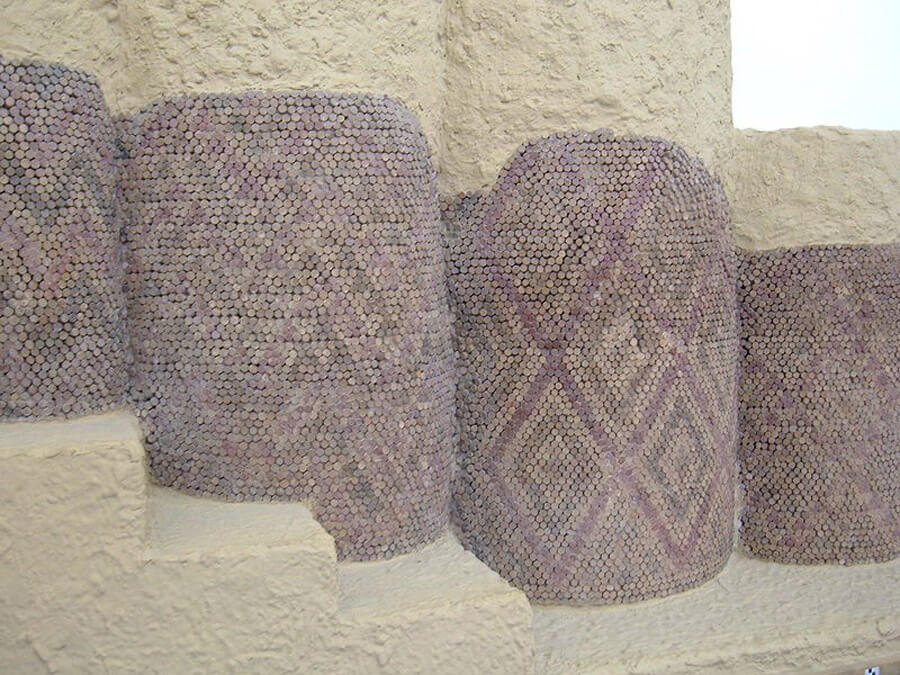
Uruk, The First Great City: A Leap Forward For Humankind?
Uruk: first city of the ancient world!
The great cities of human history have often been the cradle for the greatest aspects of humanity. The congregation of so many people in close proximity has consistently led to a flowering of human culture, innovation and social development.
But how did we free ourselves to build such cities? These mighty constructs need agriculture to feed the population, technology to combat disease and manage the people, and military strength to dominate the surrounding lands.
Cities are also often the only remnant we have of past civilizations, and the record they represent of lost cultures and peoples. How we made the jump from hunter gatherers, to agriculturalists, to city dwellers, is a story intertwined with that of the first great city humanity ever built: the city of Uruk.
The Cradle of Civilization
With its grand stonework’s and large urban population, Uruk served as the template for all cities to come: a true first step for mankind. But to understand the factors which allowed mankind to come together in this way, we must first look to the region in which Uruk was situated: the cradle of civilization, Mesopotamia.
Uruk was located between the Euphrates and Tigris rivers, near the modern city of Samawah in Iraq, a country named for the great city. According to the Sumerian King List, the city of Uruk was founded by King Enmerkar around 4,500 BC, two millennia before the great pyramids. The archaeological record suggests she may be centuries older even than this.
The period in history associated with this shift is called the Uruk period, and ranged from about 4,000 to 3,100 BC. During this period, and for many centuries afterward, Mesopotamia was an extremely fertile land, supported by the Tigris and Euphrates rivers and home to the Ubaid culture.

Irrigation fed by these rivers supported an agricultural boom in the region, and the domestication of grain crops from the Zagros mountains to the north led to a rapid increase in population in the area. A sufficient food and water supply is a key requirement to support a city, and Mesopotamia provided this like never before.
A Great City
This population increase and easy access to food and water led to several city states developing in the region, or which Uruk was by far the largest. The urbanization of the city was marked by monumental architectural creation during the Uruk period.
The population grew to between 50,000–80,000, supported by the surrounding lands and trade with its neighbours. It evolved as a hub of administration and commerce, the largest urban centre the world had ever seen.
The legendary King Gilgamesh himself is said to have built the walls of Uruk that covered an area of about 2.32 square miles (6 square kilometres). Ruling in the 27th century BC, Gilgamesh would have commanded a city already well over a millennium old.
The city was responsible for cultural and architectural developments which resonate to this day. Uruk is also known to be the origin of writing, with Sumerian cuneiform, and the Epic of Gilgamesh is often called mankind’s first story.
Uruk built the first pyramids, monumental stepped ziggurats which towered over the surrounding landscape. It developed the cylinder seal used for signatures on documents or designating personal property – mankind’s first records were kept here.

Uruk survived the rise and fall of empires for thousands of years, but she was not immortal. Conquered along with Mesopotamia by the Akkadian Empire between 2,300 and 2,000 BC, Uruk lost her pre-eminence.
Although she enjoyed a revival with the rise of Ur, the collapse of the latter around 2,000 BC left Uruk in decline. Although not abandoned, her fate was tied to the empires that followed. The Assyrians, the Babylonians, the Seleucids and the Parthians all bent Uruk to their will.
Finally, after four millennia of continuous occupation, the last inhabitants left the city of Uruk following the Muslim conquest of Persia. Abandoned, the great city remained buried until an excavation activity was carried out on the site by archaeologist William Loftus from 1850 to 1854.
Life In The Big City
The archaeological excavation from 1850 revealed a great deal about the city. The cuneiform writing, pressed into clay tablets with reeds and therefore often well preserved, revealed much of the domestic and everyday life of those who lived there.
Early clay tablets found in Uruk contained a “standard professions list” that has a list of hundreds of professionals. From the king and priests at the top, ambassadors, weavers, gardeners, cooks, smiths, jewellers, stonecutters, potters, and supervisors were all recorded in this way.
The social structure had a small ruling and priestly elite at the top, and the great mass of people who lived there were stratified into a social order as a means of organization.
The writing system appears to have begun as a means of keeping track of goats, sheep, and grains that passed through the central warehouse sometime before 3,500 BC. People used to take pictures on wet clay in order to represent different goods.

This developed over the next 400 years, the people of the city learned to use abstract numbers and symbols instead of drawing a picture for goods. These markings were then expanded to record other aspects of urban life, offering a privileged glimpse into life in ancient Uruk.
From the inscriptions that have been discovered in Uruk, it is found that the people of the city had constructed a temple dedicated to An, a sky god. They had also constructed another temple dedicated to the goddess of love and war named Innana.
Other advancements included the development of sophisticated clothing. Initially, the people of Uruk used to wear garments made from the skin of wild animals. However, as they learned to farm, they started to make clothes from both plants and their domesticated animals.
Most people wore woolen garments from the fleece of the sheep. Even during the hot weather conditions, they used to wear woolen garments. Only the elite had access to linen garments that were made from the fibres of flax plants.
The City Districts
The city of Uruk was divided into two sections, most likely two pre-existing Ubaid settlements which merged to form the city. The two districts were the Anu district and Eanna district, with the Anu district being older in comparison to the Eanna District.
The Anu district centred around the Anu Ziggurat, a single massive terrace dedicated to Anu, the Sumerian sky god. On top of the ziggurat, the White Temple was built. At the northwest edge of the ziggurat, the Stone Temple was also discovered. The temple was made up of bitumen and limestone on a podium of compacted earth, plastered with lime mortar.
The Eanna district contained much monumental public architecture and was responsible for the development of writing during the Uruk period. Owing to such developments, the Eanna district is considered the heart of the first true city in the history of humans.

The Stone-Cone Temple was the first central building in the Eanna District. Its ceremonial demolition and interment before 3,100 BC demonstrates its importance, and the customs of the Uruk population.
The succession of temples built in the Eanna district and the walls which surrounded it suggest a more esoteric purpose for this part of Uruk, associated with ritual cremation. This rise of religion and use of resources for purposes other than the immediately practical is a further innovation of the great city, only possible because of its existence.
According to a historian named Samuel Noah Kramer, the goddess Inanna was even provided with a private dwelling in the Eanna District. Some even believe that the district was walled off in order to restrict the male priestly class, a significant burden on resources which the city could apparently meet. However, the real reason is not known.
A Template For Urbanization
Writing, monumental architecture, urban planning, social stratification, organized religion, a standing military defence force, legal records, specialized professions and four millennia of continuous occupation from the very first moments of urban civilization. Uruk stands alone as a great city which paved the way for much of human development.
Before its rise, mankind scratched a living out of the dirt and dust of its fields and pastures. After its rise, fed and fuelled by the agricultural boom of Mesopotamia, mankind had risen above all other creatures to rule the lands for the first time.
